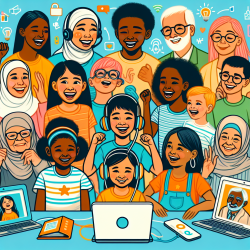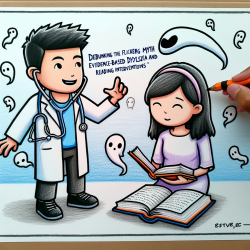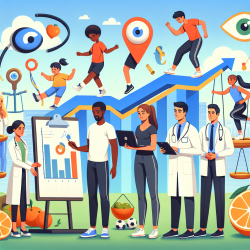In the rapidly evolving landscape of educational services, Speech Language Pathologists (SLPs) working in schools face unique challenges. The advent of online therapy, particularly through platforms like TinyEYE, is transforming how these essential services are delivered. As professionals committed to growing your knowledge and optimizing outcomes for students, understanding the nuances and benefits of online therapy is crucial.
The Evolution of Online Therapy
Online therapy, also known as teletherapy, has gained substantial traction over the past decade. Initially met with skepticism, it has now proven to be a viable and effective method for delivering speech and language services. The COVID-19 pandemic accelerated this shift, demonstrating the necessity and efficacy of remote services. TinyEYE, a pioneer in this field, has been at the forefront of providing comprehensive online therapy solutions to schools worldwide.
Why Online Therapy?
Online therapy offers numerous advantages over traditional in-person sessions, including:
- Accessibility: Online therapy breaks down geographical barriers, ensuring that students in remote or underserved areas receive the support they need.
- Flexibility: Scheduling is more manageable, allowing sessions to be conducted during school hours or at times that are convenient for students and families.
- Consistency: Continuity of care is maintained, even during school closures or other disruptions.
- Resource Optimization: Schools can maximize their resources by utilizing specialized therapists who might not be available locally.
How TinyEYE Supports SLPs
TinyEYE’s platform is designed with the needs of both students and SLPs in mind. Here’s how it supports your work:
- Comprehensive Tools: The platform offers a suite of tools and resources, including interactive activities, assessments, and progress tracking, tailored to meet the diverse needs of students.
- Professional Development: TinyEYE provides ongoing training and support to help SLPs stay current with best practices and emerging trends in online therapy.
- Collaboration: The platform facilitates seamless communication and collaboration between SLPs, teachers, and parents, ensuring a holistic approach to student development.
Case Studies: Success Stories
Real-world examples illustrate the impact of TinyEYE’s services. For instance, a rural school district in Montana struggled to find qualified SLPs. By partnering with TinyEYE, they were able to provide consistent, high-quality therapy to their students, significantly improving speech and language outcomes. Another example is a school in urban New York, where online therapy helped reduce the waitlist for services, ensuring timely intervention for kids in need.
Addressing Mental Health Through Speech Therapy
Mental health is intricately linked with communication skills. Students who struggle with speech and language often experience social isolation, anxiety, and low self-esteem. By providing effective speech therapy, SLPs can play a crucial role in enhancing students’ mental health and overall well-being. TinyEYE’s holistic approach ensures that mental health considerations are integrated into therapy plans, promoting a supportive and nurturing environment for kids.
Future Directions
The field of online therapy is continually evolving. Advances in technology, such as artificial intelligence and virtual reality, hold promise for even more personalized and immersive therapy experiences. TinyEYE is committed to staying at the cutting edge of these developments, ensuring that SLPs have access to the best tools and techniques available.
Conclusion
As an SLP working in schools, embracing online therapy through platforms like TinyEYE can significantly enhance your ability to serve students effectively. By leveraging the power of technology, you can overcome traditional barriers and provide high-quality, consistent, and accessible speech and language services. Stay curious, keep growing your knowledge, and explore the potential of online therapy to transform your practice and improve student outcomes.










